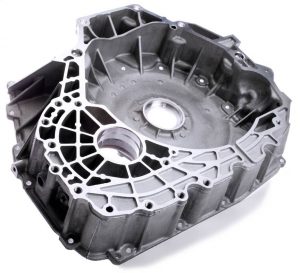Information about Various Diecasting
Diecasting, by
classification, is a course of action in which molten metal is being injected
into metallic molds under force to form objects. The molds, which are built of
steel and introduced to as "dies", can be made to create very
specific parts with little or no post-machining essential after production. It
is similar in countless ways to plastic injection molding. Dies can be reused
various times since the temperatures of the molten metal are not high enough to
influence the steel die. The parts are light in weight, and for this reason are
used in aircraft and auto applications.
Record of the Process
The course of action by
pouring molten metal into a die, also regarded as the gravity pressure process,
is a manufacturing technique that has been employed for hundreds of years. The
most advanced approach of pressure injection was branded in the mid-1800's to
make lead printer's type. The use of the process as a manufacturing strategy
exploded in the early 1900's, particularly when zinc and aluminum alloys became
more easily available. Right now, the course of action used for an extensive
range of merchandise and applications.
Materials Used
To maintain the
credibility of the die and let it be employed for many castings, only alloys
with reasonably low melting temperatures can be utilized in the process. Until
recently, tin and lead were the principal materials for parts, since they could
only be melted implementing typical approaches. Currently, the vast majority of
pieces are made from aluminum or zinc alloys, but other metals such as
magnesium or copper can be applied. Each alloy gives its positive aspects, and
therefore the product demands to drive the material choice. Aluminum can be
found in aircraft and car parts while copper may be implemented for parts that
have to do electricity.
Outline of the Process
Before it is executed,
the mold is set up. This mold may consist of two or more parts, on the
complexity being fabricated. These are sorted as either cold or hot chamber
products. In a cold chamber, the molten metal is poured in a "cold".
A hydraulic piston conceals the cylinder. On a hot chamber, the injection
technique sits in a bath of molten metal. A plunger is then raised to pull the
metal in the chamber. Afterward, it injects the molten metal in the die. The
hot chamber system is like a pneumatic bicycle pump that pulls air around the
pump and pumps into a tire through the fitting and tube. After the diecasting
procedure, the part thin metal or have to flash around the part where the two
halves of the die agree around it.


Comments
Post a Comment